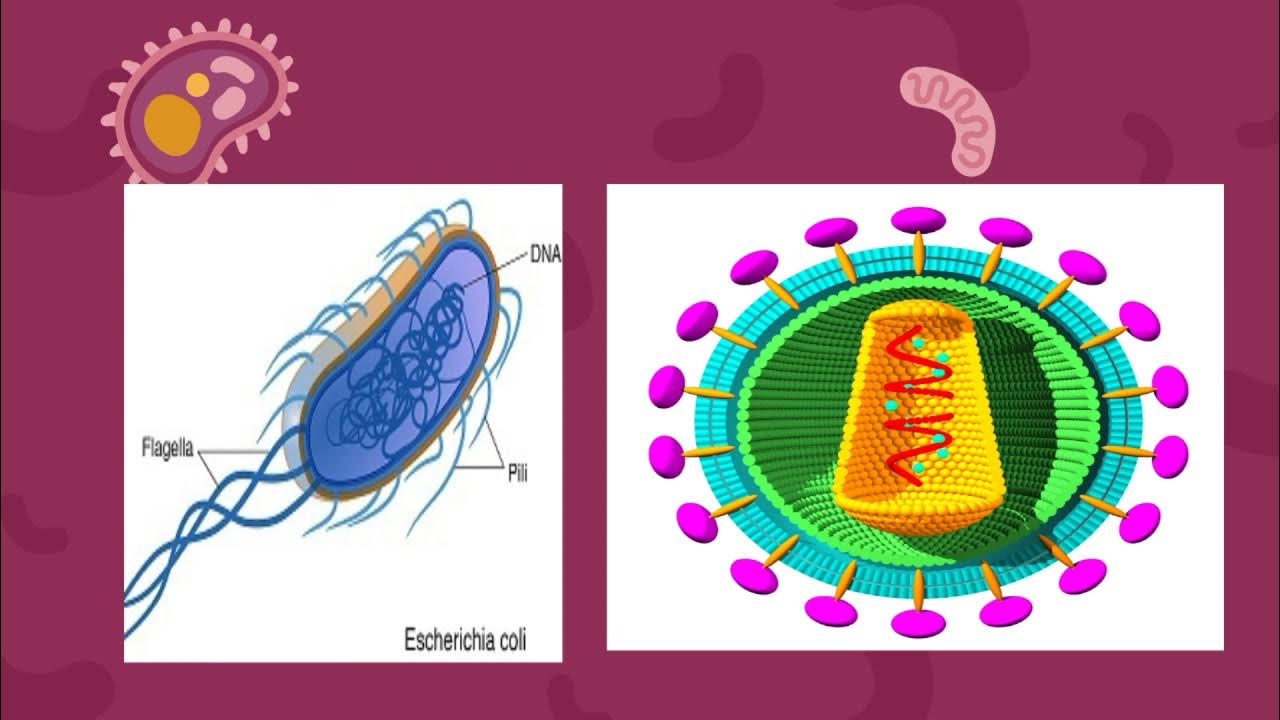Herança citoplasmática - Módulo 3 - Genética básica
Summary
TLDRThis video explains cytoplasmic inheritance, focusing on mitochondrial and chloroplast DNA. Both organelles contain their own DNA, inherited maternally rather than through Mendelian inheritance. Mitochondria, responsible for energy production, and chloroplasts, responsible for photosynthesis, pass their genetic material from mother to offspring. The inheritance pattern is unique, with no paternal contribution. Additionally, genetic variation within these organelles is influenced by factors like the number of organelles per cell and tissue energy demand. The video touches on the endosymbiotic theory, which suggests mitochondria and chloroplasts share similarities with bacteria.
Takeaways
- 😀 Mitochondria and chloroplasts have their own DNA, which is inherited separately from nuclear DNA and follows a non-Mendelian pattern.
- 😀 Cytoplasmic inheritance refers to the transmission of traits via extranuclear DNA found in organelles like mitochondria and chloroplasts.
- 😀 Mitochondrial DNA (mtDNA) is inherited exclusively through the maternal lineage in animals, with rare exceptions in plants.
- 😀 Chloroplasts are responsible for photosynthesis in plants and also contain their own circular DNA, inherited maternally.
- 😀 Mitochondria play a key role in cellular energy production by synthesizing ATP, and mitochondrial defects typically affect high-energy-demand tissues.
- 😀 Mitochondria and chloroplasts have circular DNA, which is haploid, meaning it contains a single set of genes, unlike nuclear DNA, which is linear and diploid.
- 😀 The inheritance of mitochondria and chloroplasts does not follow traditional Mendelian inheritance, where both parents contribute equally to the offspring's traits.
- 😀 The number of mitochondria in a cell and their DNA content can vary by tissue type, influencing the inheritance of mitochondrial-related diseases.
- 😀 Mitochondrial diseases are usually inherited through the mother and can lead to severe health issues, often in tissues with high energy demands like muscles and the heart.
- 😀 The endosymbiotic theory explains the origin of mitochondria and chloroplasts, suggesting they evolved from ancient bacteria that formed a symbiotic relationship with host cells.
Q & A
What is cytoplasmic inheritance?
-Cytoplasmic inheritance refers to the transmission of genetic traits that are controlled by genes located in organelles like mitochondria and chloroplasts, rather than in the nuclear DNA. This inheritance is typically maternal, meaning it is passed down from mother to offspring.
How does mitochondrial DNA (mtDNA) differ from nuclear DNA in terms of inheritance?
-Mitochondrial DNA is inherited exclusively through the mother, unlike nuclear DNA, which is inherited equally from both parents. This means that traits controlled by mitochondrial DNA are passed on through the maternal line.
What are the key characteristics of mitochondrial DNA?
-Mitochondrial DNA (mtDNA) is a type of extranuclear DNA that is circular in structure, similar to bacterial DNA. It contains fewer genes compared to nuclear DNA and is responsible for producing proteins that are crucial for mitochondrial function. mtDNA replicates independently of nuclear DNA, and it does not associate with histones like nuclear DNA.
What is the difference between haplotypes and genotypes in the context of mitochondrial and chloroplast DNA?
-A haplotype refers to the set of genes or genetic variants present in organelles such as mitochondria or chloroplasts, where genes typically appear in single copies. A genotype, on the other hand, refers to the genetic composition of an individual organism, especially in the nuclear DNA, where genes are typically present in pairs.
Why are mitochondrial diseases often associated with energy-demanding tissues?
-Mitochondrial diseases often affect tissues with high energy requirements, such as muscle and nerve tissues, because mitochondria are responsible for producing ATP, the primary energy currency of the cell. Defective mitochondrial DNA impairs energy production, leading to dysfunction in these tissues.
How does the number of mitochondria in a cell relate to its energy requirements?
-The number of mitochondria in a cell varies depending on the cell's energy demands. Cells with higher energy needs, such as those in muscle tissue or the heart, contain a greater number of mitochondria to meet these demands, while cells with lower energy needs may have fewer mitochondria.
What is the endosymbiotic theory and how does it relate to mitochondria and chloroplasts?
-The endosymbiotic theory proposes that mitochondria and chloroplasts are the result of a symbiotic relationship between ancient eukaryotic cells and bacteria. According to this theory, mitochondria and chloroplasts originated as free-living bacteria that were engulfed by a host cell, eventually evolving into essential organelles within eukaryotic cells.
Why do mitochondria follow a maternal inheritance pattern in animals?
-In animals, mitochondria are passed to the offspring exclusively through the egg cell (oocyte), which contains nearly all of the mitochondrial content of the zygote. The sperm cell contributes little to no mitochondria, which is why mitochondrial inheritance follows a strictly maternal pattern.
How does chloroplast inheritance differ between species?
-In most plants, chloroplast inheritance follows a maternal pattern, similar to mitochondrial inheritance. However, there can be exceptions in certain species where chloroplasts may be inherited through both maternal and paternal lines. In general, though, the maternal inheritance of chloroplasts is more common.
What are variegated plants and how do they relate to chloroplast inheritance?
-Variegated plants display leaves with different colors, often due to a mixture of normal and defective chloroplasts. This can occur when some chloroplasts in the plant contain normal DNA, while others have mutations or defects. Since chloroplasts are inherited maternally, the phenotypic variation in leaf color reflects the inheritance pattern of chloroplasts with functional or defective DNA.
Outlines

Cette section est réservée aux utilisateurs payants. Améliorez votre compte pour accéder à cette section.
Améliorer maintenantMindmap

Cette section est réservée aux utilisateurs payants. Améliorez votre compte pour accéder à cette section.
Améliorer maintenantKeywords

Cette section est réservée aux utilisateurs payants. Améliorez votre compte pour accéder à cette section.
Améliorer maintenantHighlights

Cette section est réservée aux utilisateurs payants. Améliorez votre compte pour accéder à cette section.
Améliorer maintenantTranscripts

Cette section est réservée aux utilisateurs payants. Améliorez votre compte pour accéder à cette section.
Améliorer maintenant5.0 / 5 (0 votes)






